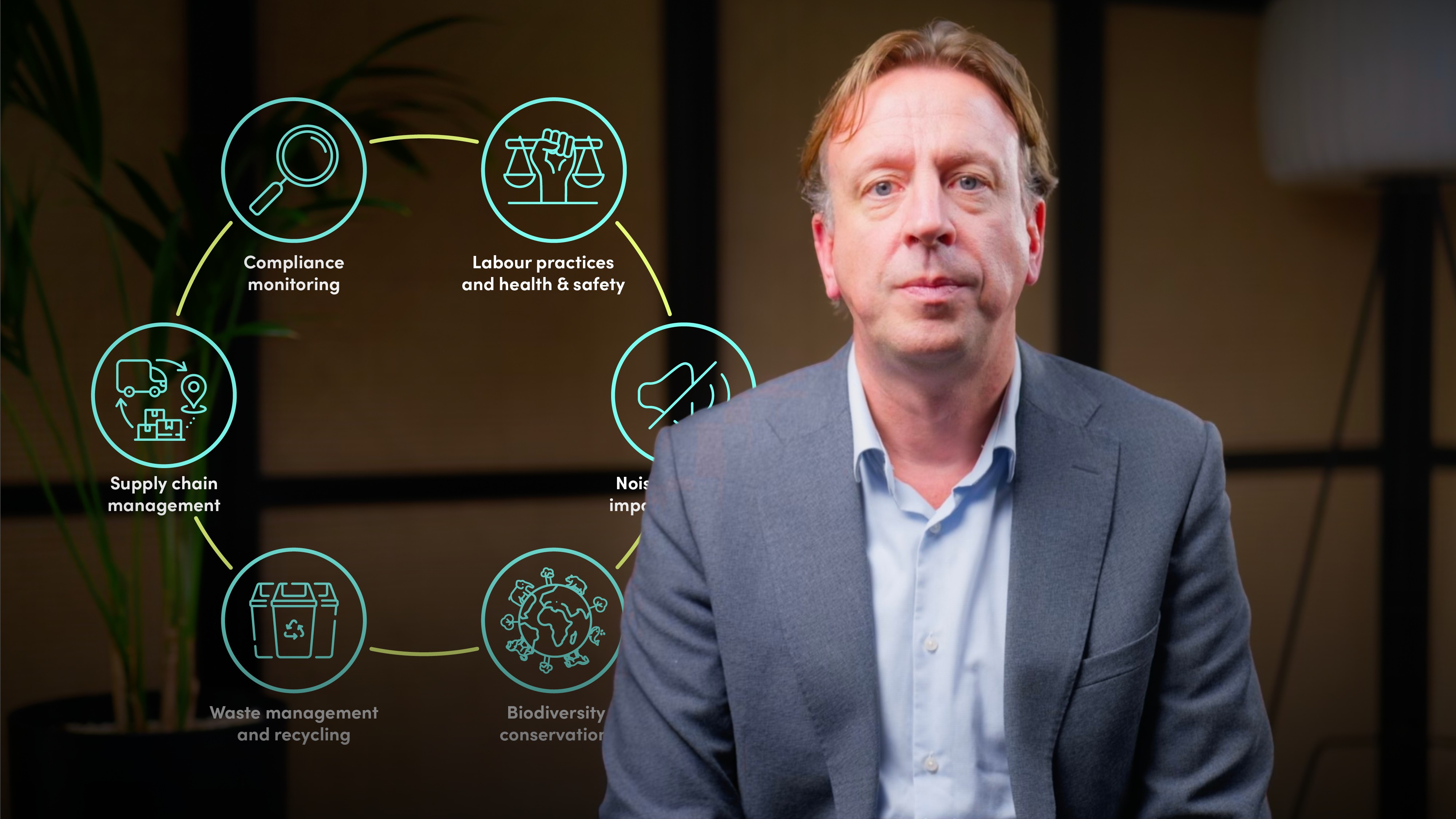
Integrating ESG in Renewable Energy Asset Construction

Cederik Engel
What does it take to build a renewable energy project responsibly? In this video, Cederik Engel explores the critical role of ESG in asset construction. From compliance monitoring and fair labour practices to biodiversity conservation and waste management, we highlight the key factors that drive sustainable construction.
What does it take to build a renewable energy project responsibly? In this video, Cederik Engel explores the critical role of ESG in asset construction. From compliance monitoring and fair labour practices to biodiversity conservation and waste management, we highlight the key factors that drive sustainable construction.
Subscribe to watch
Access this and all of the content on our platform by signing up for a 7-day free trial.

Integrating ESG in Renewable Energy Asset Construction
10 mins 48 secs
Key learning objectives:
Understand how to implement compliance monitoring for environmental and safety standards during asset construction
Outline the best practices for ensuring fair labour conditions and worker safety
Identify strategies to reduce noise and visual impacts on communities
Understand how biodiversity conservation is integrated into project development
Outline the ethical supply chain management in renewable energy construction
Understand responsible waste management and recycling practices
Overview:
Subscribe to watch
Access this and all of the content on our platform by signing up for a 7-day free trial.
The construction phase of a renewable energy project presents significant ESG challenges, from environmental compliance to labour rights and community impact. By embedding ESG principles, developers ensure that projects are built responsibly, meeting regulatory requirements and ethical standards while minimising disruption to local communities and ecosystems.
How is compliance monitored during construction?
Strict compliance monitoring ensures that all activities align with environmental regulations and permit conditions. Regular site inspections, real-time monitoring, and contractor reporting help identify and resolve non-compliance issues. A proactive approach including corrective action plans ensures that environmental standards are consistently upheld throughout the construction process.
What measures ensure fair labour practices and worker safety?
Construction workers’ health, safety, and rights are prioritised through robust protocols, training, and strict adherence to occupational safety regulations. Fair wages, reasonable working hours, and access to healthcare are fundamental. Ethical sourcing is also a key concern highlighted by an ESG due diligence case where a solar panel supplier was flagged for potential links to forced labour. Addressing such risks strengthens ESG commitments within the supply chain.
Construction noise and visual disturbances can disrupt local communities and wildlife. Measures such as sound barriers, scheduling noisy work during off-peak hours, and preserving natural landscapes help mitigate these impacts. Thoughtful planning and community engagement prevent opposition and foster positive stakeholder relationships.
Protecting local ecosystems is integral to responsible development. Biodiversity management plans guide construction activities, ensuring sensitive habitats remain undisturbed. Strategies such as buffer zones and habitat restoration minimise ecological disruption, allowing wildlife to coexist with renewable energy projects.
How is waste managed sustainably?
Comprehensive waste management plans focus on minimising construction waste and maximising recycling. Materials like metals, plastics, and concrete are recovered and repurposed whenever possible. Hazardous waste is carefully handled to prevent environmental contamination, ensuring that construction aligns with circular economy principles.
Sustainable construction depends on ethical sourcing and responsible procurement. Companies must vet suppliers for fair labour practices and environmental responsibility. This requires stringent due diligence, audits, and ongoing oversight. Balancing cost, efficiency, and ESG compliance presents a complex challenge, but strong supplier management ensures that projects meet sustainability commitments.
Subscribe to watch
Access this and all of the content on our platform by signing up for a 7-day free trial.

Cederik Engel
There are no available Videos from "Cederik Engel"





























